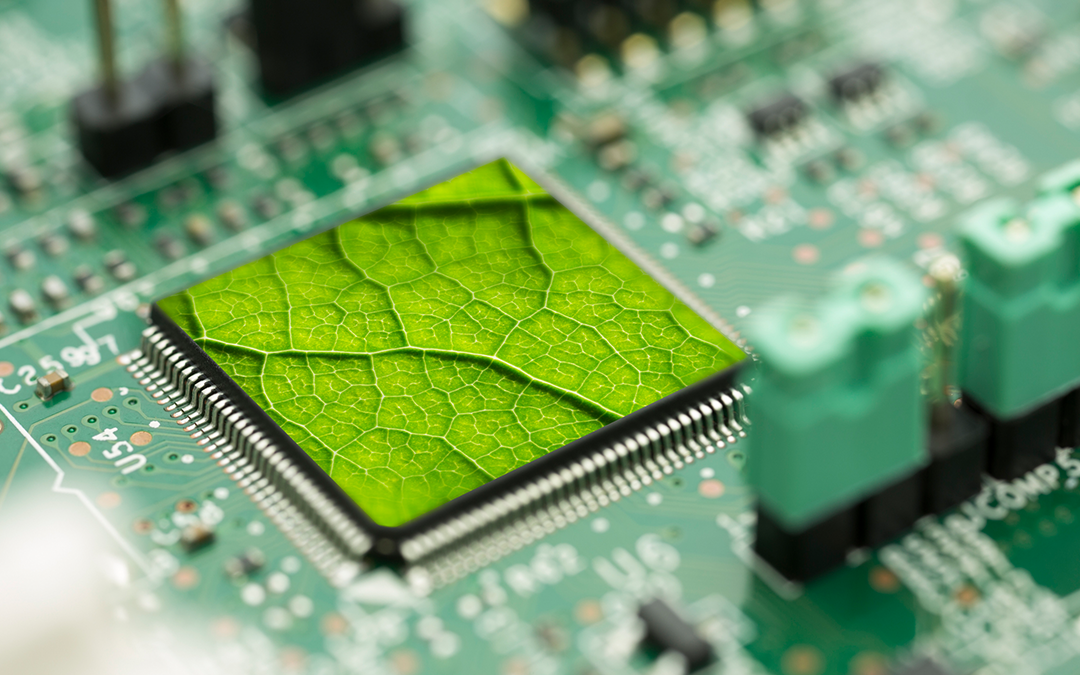In an era where environmental sustainability is paramount, businesses are increasingly looking for ways to reduce their carbon footprint. One area that offers significant potential for improvement is Information Technology (IT). The concept of Green IT has emerged as a powerful approach to minimizing the environmental impact of technology while simultaneously enhancing efficiency and reducing costs. At TechGenies, we’re committed to helping businesses make smart technology choices that contribute to a greener future.
Understanding Green IT
Green IT, also known as sustainable IT or eco-friendly IT, refers to the practice of environmentally sustainable computing. It involves designing, manufacturing, using, and disposing of computers, servers, and associated subsystems efficiently and effectively with minimal or no impact on the environment. The goal is to reduce the use of hazardous materials, maximize energy efficiency during the product’s lifetime, and promote the recyclability or biodegradability of defunct products and factory waste.
Green IT is not just about being environmentally responsible; it’s about making smart, forward-thinking technology choices that benefit both the planet and the bottom line. At TechGenies, we’re dedicated to helping businesses navigate the path to sustainable IT practices. By implementing Green IT strategies, companies can significantly reduce their carbon footprint while also improving efficiency, reducing costs, and positioning themselves as leaders in corporate sustainability.
As technology continues to evolve, so too will the opportunities for greener IT practices. By staying informed and proactive, businesses can ensure they’re always at the forefront of sustainable technology use. Remember, every smart technology choice is a step towards a more sustainable future.
Key Strategies for Implementing Green IT
Energy-Efficient Hardware
One of the most direct ways to reduce IT-related carbon emissions is by choosing energy-efficient hardware. This includes:
- Selecting ENERGY STAR-certified devices
- Opting for laptops over desktops when possible (laptops typically use 80% less energy)
- Utilizing thin clients instead of full PCs for task-specific workstations
Virtualization and Cloud Computing
Virtualization allows multiple virtual servers to run on a single physical server, significantly reducing energy consumption and hardware requirements. Cloud computing takes this a step further by centralizing computing resources in highly efficient data centers. Benefits include:
- Reduced need for on-premises hardware
- Improved resource utilization
- Scalability without additional physical infrastructure
Power Management
Implementing robust power management policies can lead to substantial energy savings:
- Configure devices to enter low-power states when inactive
- Use smart power strips to eliminate phantom energy draw
- Implement server power management to reduce data center energy consumption
E-Waste Management
Responsible disposal and recycling of electronic equipment is crucial for reducing environmental impact:
- Partner with certified e-waste recyclers
- Implement IT asset disposition (ITAD) programs
- Consider leasing equipment to ensure proper end-of-life handling
Green Data Centers
For businesses operating their own data centers, numerous strategies can reduce energy consumption:
- Implement hot aisle/cold aisle configurations for efficient cooling
- Use renewable energy sources where possible
- Optimize data center infrastructure management (DCIM)
Telecommuting and Digital Collaboration
Enabling remote work and digital collaboration can significantly reduce carbon emissions associated with commuting and office space:
- Implement robust video conferencing solutions
- Utilize cloud-based collaboration tools
- Support flexible work arrangements
Paperless Initiatives
Reducing paper usage not only saves trees but also decreases energy consumption associated with printing and document storage:
- Implement digital document management systems
- Encourage digital signatures and approvals
- Use e-billing and digital receipts
Green Software Development
The way software is designed and coded can impact energy consumption:
- Optimize code for efficiency
- Design applications to use minimal resources
- Consider the energy impact of algorithms, especially in data-intensive applications
Measuring the Impact of Green IT
To ensure the effectiveness of Green IT initiatives, it’s crucial to measure and monitor their impact. Key metrics to track include:
- Energy consumption of IT equipment
- Carbon emissions associated with IT operations
- E-waste generation and recycling rates
- Cost savings from energy efficiency improvements
The Business Case for Green IT
While the environmental benefits of Green IT are clear, there’s also a strong business case for its adoption:
- Cost savings through reduced energy consumption and hardware needs
- Improved brand image and customer loyalty
- Compliance with increasingly stringent environmental regulations
- Enhanced operational efficiency and productivity

